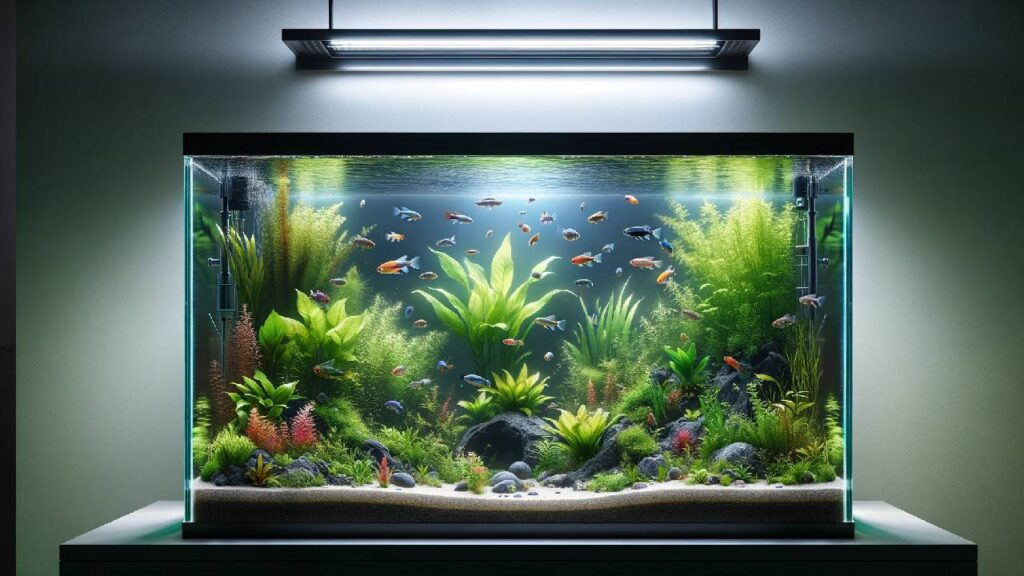Lighting is a critical factor in the health and growth of aquarium plants. Just like terrestrial plants, aquatic flora require light for photosynthesis, the process by which they convert light energy into chemical energy. It is not just the intensity but also the color of light that plays a pivotal role in fostering an environment conducive to growth. This article will explore the best color light for aquarium plants, helping you create a thriving aquascape.
So, if you’re looking to grow the best aquarium plants for a thriving fishtank, then you’ve come to the right place.
Understanding Light Spectrum
Before diving into specific colors, it’s essential to understand the light spectrum. Light is composed of colors that are part of the visible spectrum, ranging from violet to red. Aquarium plants typically respond to the blue and red ends of the spectrum, which are crucial for different growth stages.
Blue Light: For Healthy Foliage
Blue light, which is on the cooler end of the spectrum, is known to promote lush foliage in aquarium plants. It is especially beneficial for the vegetative growth phase, encouraging robust leaf development. Blue light is akin to the light on a clear day and is crucial for strong and healthy plants.
Red Light: For Flowering and Fruiting
Red light falls on the warmer end of the spectrum and is often associated with the flowering and fruiting stages of plant growth. For aquatic plants that flower, red light can encourage blooming. It simulates the softer light of dawn or dusk and can be instrumental in the reproductive cycle of plants.
Green Light: The Spectrum’s Middle Ground
Green light is often overlooked since plants reflect green light, which is why they appear green to us. However, recent studies have shown that green light can penetrate deeper into the water column, reaching plants that do not receive enough red or blue light.
Full Spectrum: The Best of All Worlds
Many aquarists opt for full-spectrum lights, which combine red, blue, green, and other colors. Full-spectrum lighting provides a balanced light source that supports overall plant health, simulating natural sunlight to meet all the photosynthetic needs of aquarium plants.
Intensity and Duration
In addition to color, the intensity and duration of light exposure are equally important. High-light plants will require more intense illumination, while low-light plants can thrive with less. The duration of lighting should mimic natural daylight hours, typically around 8-10 hours per day.
LED Technology: A Modern Solution
LED lighting has revolutionized aquarium lighting, offering a range of colors and intensities. With programmable options, LED lights can provide a tailored lighting schedule that changes throughout the day, closely mimicking the natural progression of daylight.
Conclusion
Choosing the best color light for aquarium plants is not just about aesthetics but understanding the needs of your aquatic garden. Blue light is excellent for promoting vegetative growth, while red light can help with flowering and fruiting. However, a full-spectrum light source is often the best choice, providing a comprehensive solution that caters to the diverse needs of aquarium plants. Coupled with proper intensity and duration, the right lighting can transform your aquarium into a vibrant, photosynthesizing ecosystem, brimming with vitality.
